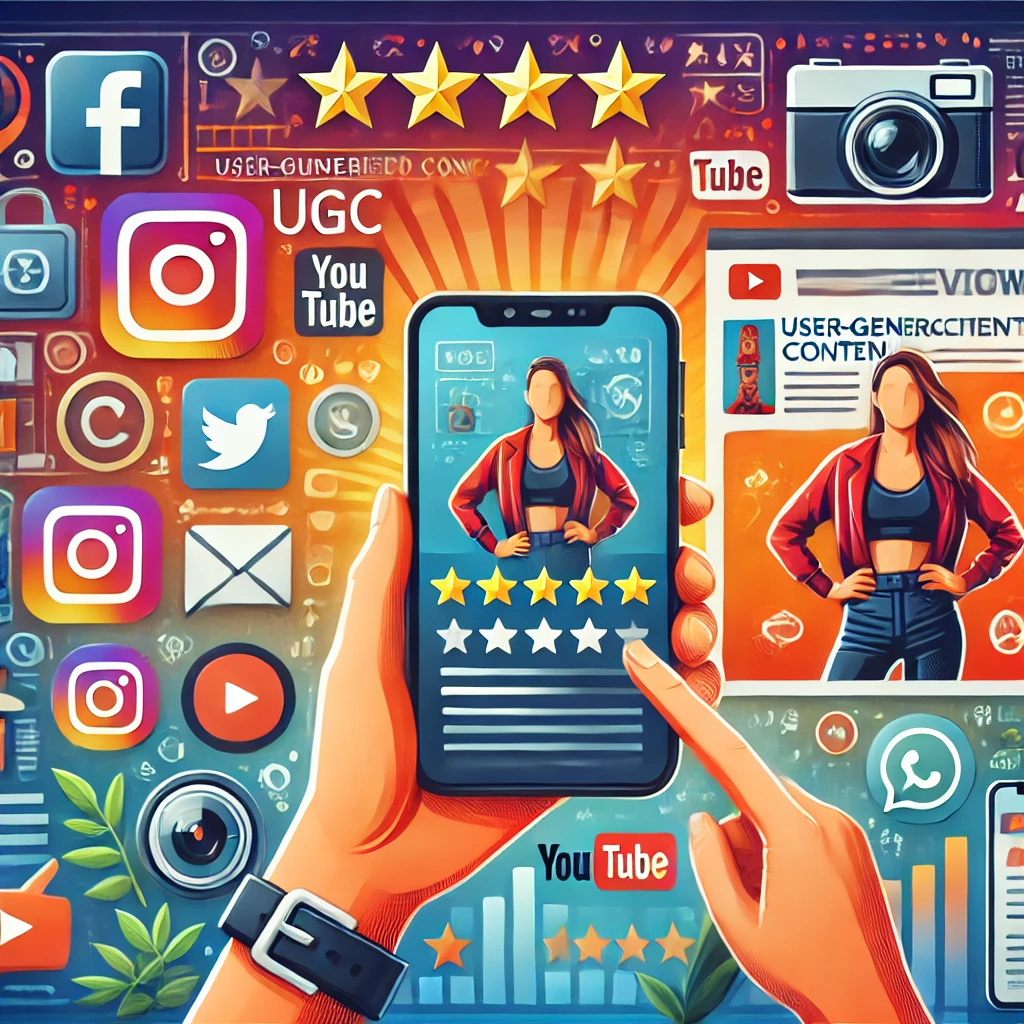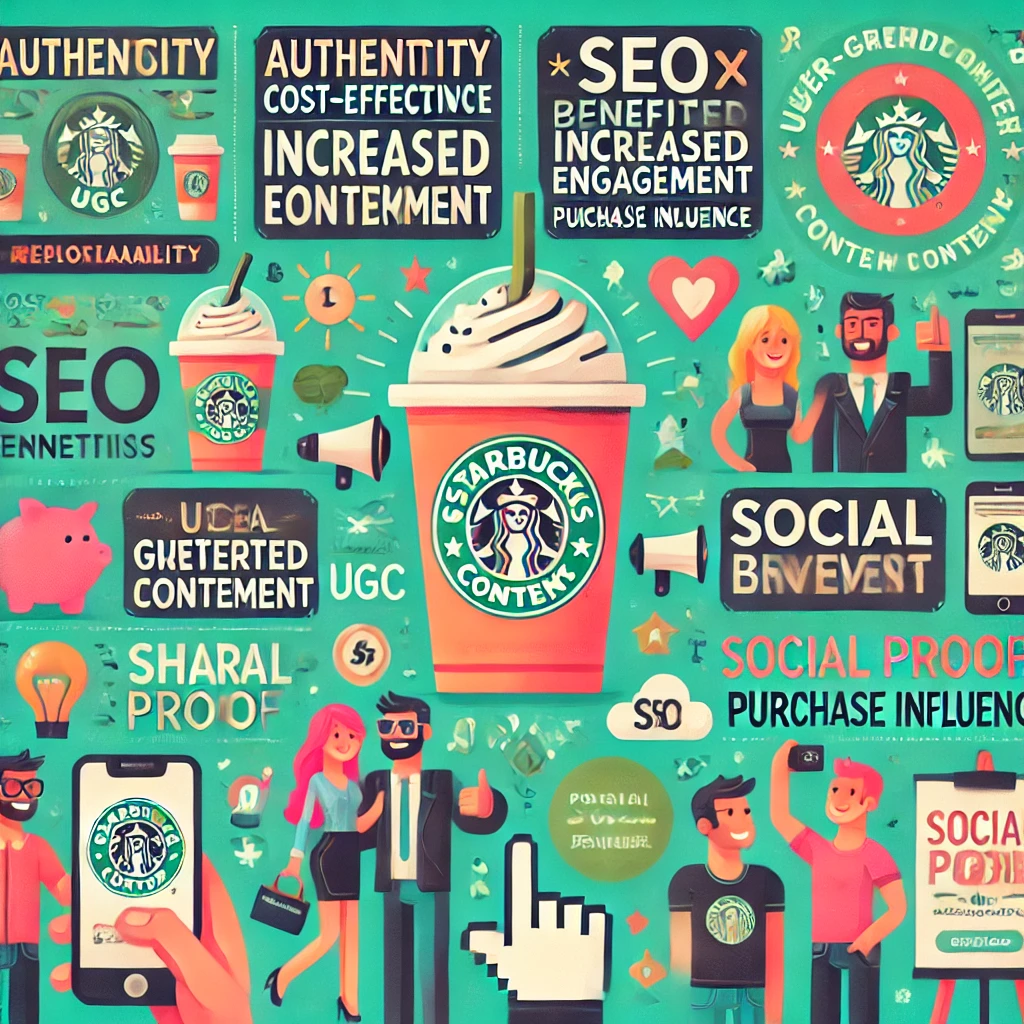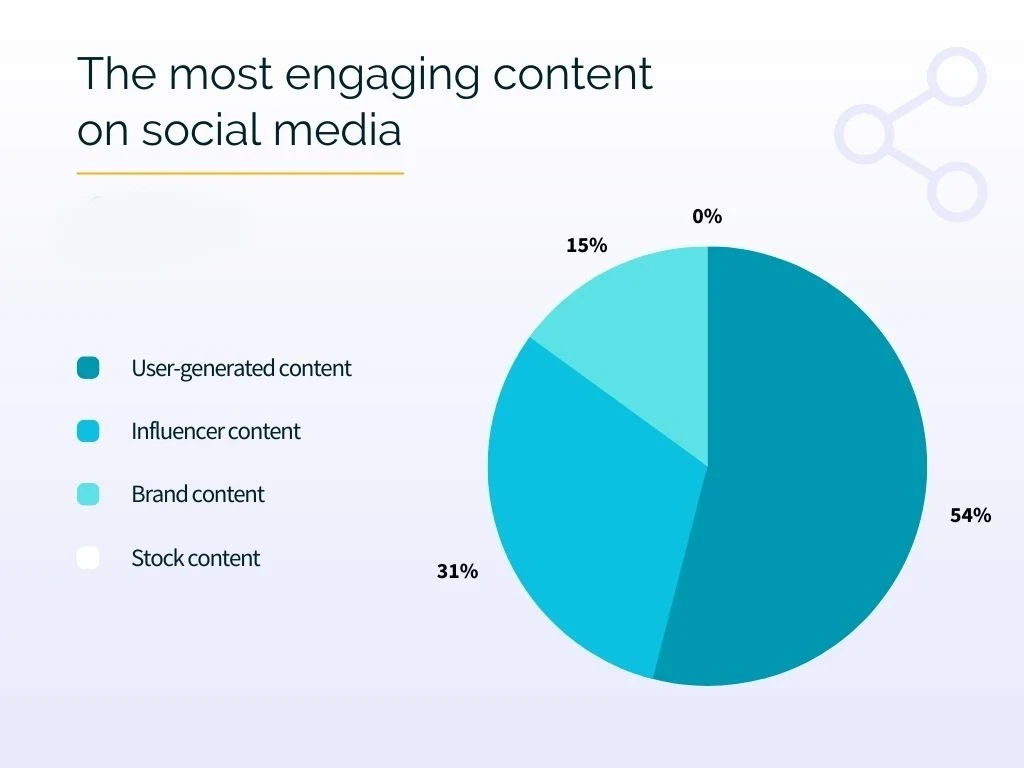There is a way of creating content which is failing very fast in today’s time, User-Generated Content. This is a way of image, video or text which is created by the user. There users shares their personal opinion and creative work
For Business, User-Generated Content provides authentic support for customers, helping to build trust and credibility, improve engagement, and often influence purchasing decisions. User-Generated Content has become important in digital marketing because of its genuineness and cost-effectiveness, giving brands the power to showcase real interactions and connections with their audience that is the interpretation of user-generated content.

Why UGC has become popular in digital marketing
User-Generated Content (UGC) has gained popularity in digital marketing because it provides a number of strong advantages and it offers brands and their audience. Here are some reasons why user-generated content is so popular and successful.
- Authenticity and Trust
- Consumers are more likely to trust real user experiences over traditional advertising.
- User-Generated Content feels more trustworthy than branded content because it comes directly from users
- Improve Engagement
- User-Generated Content means inspires users to interact with brands by sharing their own stories, photos and videos, improving engagement.
- The brand develops a feeling of community and connection as a result of this contact.
- Cost-Effective Content Creation
- User-Generated Content is frequently free or low cost, reducing the need for brands to create all content in house.
- It helps brands fill their content calendar with fresh, various material contributed by real users.
- Higher Conversion Rates
- Consumers frequently make purchasing decisions based on reviews, photos, and stories shared by the users that is the meaning of user-generated content.
- User-Generated Content serves as a social proof, motivating others to purchase by showcasing satisfied users.
How UGC is important and What makes it Popular (successful)
UGC has become an important component of digital marketing due to its capacity to construct authenticity ,engage audiences, and create trust. Here’s what makes User-Generated Content important and popular:

Why UGC is Important
- Increases Credibility and Trust
- Consumers focus on trusting content created by the users more than branded contents or ads, User-Generated Content acts as a social proof, demonstrating real client experiences and increasing the brand’s legitimacy.
- Promotes higher Engagement
- User-Generated Content hints users to actively participate in the brand’s story, whether by sharing photos, writing reviews or posting about their experience. The community and consumer ties get stronger as a result of this engagement.
- Influences Purchase Decisions and Increases Conversions
- Conversion rates are raised because new consumers frequently turn to user-generated content such as reviews, testimonials, and customer images when making judgments about what to buy.
- Economical Content Creation
- Since User-Generated Content is usually low-cost or free for brands, it lessens the workload associated with creating content. Without requiring large production costs, it enables brands to distribute an ongoing supply of different and genuine content.
What makes UGC Popular
- Authenticity and Reliability
- Content shared by users themselves is more relatable to people. User-Generated Content makes the company more approachable and relatable to prospective buyers by representing real-life experiences.
- Personalization for Different Audiences
- Using customized, meaningful material, User-Generated Content enables brands to engage with a wide range of users by showcasing a variety of viewpoints and experiences.
- Increases Brand Loyalty and Community
- Users become brand advocates when they are included in brand storytelling through user-generated content, which increases their sense of connection and belonging.
- Promotes Long-Term Brand Growth
- User-Generated Content supports long-term brand growth by building customer loyalty, increasing brand reach, and creating a community around the company as it builds trust and brand identification.
User-Generated Content In Social Media
In social media, the meaning of user-generated content has become crucial for promoting the brand, communication, and trust. It is made up of publicly posted images, videos, reviews, and stories that people on social media freely produce about a company, good, or experience. Here’s why user-generated content is so effective on social media and how marketers use it successfully

Uses of User-Generated Content
There are many ways to use User-Generated Content, just like Digital Marketers use User-Generated Content to increase engagement, build trust and grow business as much as possible
- Social Media Marketing
- Social Proof: Including client advertising, videos and images promotes trust and reliability.
- Brand Hashtag Campaigns: Promoting the use of branded hashtags (like #thevansh) in posts by customers increases brand awareness and interaction.
- Website Content
- Customer Testimonials and Reviews: Displaying actual customer reviews on product sites promotes conversions by confirming the impact and quality of the product.
- Photo Galleries: On their websites, brands display images of their customers to give them a more relatable and real look at their goods.
- E-Commerce pages
- Customer Photos and Reviews: Adding user-generated content to product listings improves the product’s credibility and may influence buyer choices to buy.
- Rating System and Star Reviews: Potential consumers can view reviews from real users thanks to these features, which boost transparency and trust.
- Product Development and Improvement
- Feedback for New Features: User-Generated Content may guide product development by offering useful data on what consumers value or would like to see improved.
- Consumer perceptions and creativity: Brands are able to improve their products by using user-generated content to find popular ideas or needs.
Types of User-Generated Content (UGC)
- Memes and Creative Content
- Branded Memes: To make a brand look more relatable, some users make funny or relevant memes.
- User-Edited Images and Graphics : Consumers creatively edit product photos or graphics to produce visually unique user-generated content (UGC) that is simple to share.
- Q&A and Product Feedback
- Customer Q&A Sections: Customers respond to other shoppers’ questions on e-commerce websites, offering initiative product insights.
- Feedback on Social Media: On social media, users regularly offer direct product feedback, giving companies suggestions for improvements.
- Product Photos and Unboxing Content
- Unboxing Videos: Users follow their experience of opening a product for the first time, expressing first thoughts and excitement.
- Product Photography: Users usually give validity to brand marketing initiatives by posting in-depth images of the product in use.
- Rating and Recommendation on Review Platforms
- Third-Party Reviews: Reviews from customers are found on websites such as TripAdvisor, Yelp, and Glassdoor, and are important for businesses that focus on customer service and location.
- Recommendations: Users regularly promote products to their loved ones, friends, and online communities on sites like Facebook groups and Reddit.
More topics that are related to each other:
- “Learn how Social Media Marketing thrives on user-generated content.”
- “Discover how Trends in Marketing emphasize the growing importance of UGC.”
- “See the impact of Display Advertising in Digital Marketing enhanced by user-generated visuals.”
- “UGC is a fundamental part of Content Marketing strategies today.”
- “Explore how Artificial Intelligence in Marketing leverages UGC for personalization.”
- “Understand the connection between Brand Marketing and authentic user-generated content.”
- “Start with the Fundamentals of Marketing to see why UGC matters.”
- “Explore the Principles of Marketing and their connection to UGC.”
- “Compare the roles of UGC in Digital Marketing vs. Traditional Marketing.”
